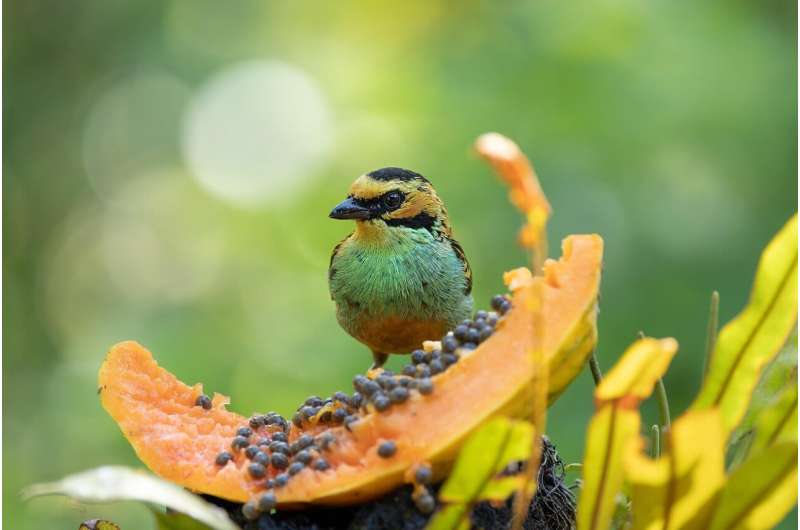
A team of researchers from Princeton University has uncovered how certain birds use black and white feathers to amplify the vibrancy of their plumage. Their findings, published on July 26, 2025, in the journal Science Advances, reveal that these seemingly dull feathers play a crucial role in enhancing the brightness of colorful feathers.
The study led by Rosalyn Price-Waldman demonstrated that when colored feathers overlay a base of either black or white feathers, the visible colors become more striking. For instance, male birds often display brighter colors than females, a phenomenon largely attributed to sexual selection, as first described by Charles Darwin. The most vivid males are generally more successful in attracting mates, thus contributing to the evolution of their brilliant plumage.
Mechanics of Color Enhancement
The research highlights that a layer of black feathers beneath bright blue plumage significantly enhances its vibrancy. This occurs because black feathers absorb light, allowing the structural properties of the blue feathers to scatter light primarily in the blue spectrum. As a result, the blue color appears more intense, as other wavelengths are absorbed rather than reflected.
In contrast, the study found that yellow feathers, which derive their color from carotenoid pigments, benefit from a white under-layer. This white layer reflects light that penetrates the yellow feathers, increasing their brightness and creating a sharper contrast against other colors. This duality in color enhancement techniques illustrates the complexity and adaptability of avian coloration.
A Widespread Adaptation
Primarily focusing on various species of tanagers—colorful fruit-eating birds found in Central and South America—the researchers expanded their investigation to other bird families. They discovered that the use of underlying black and white feathers to enhance color is prevalent among multiple species, including the vibrant Australian fairy wrens.
The widespread occurrence of this adaptation suggests that birds have utilized these layering techniques for tens of millions of years. Understanding these mechanisms not only sheds light on the evolution of color in birds but may also inspire advancements in fields such as architecture, art, and fashion.
This research marks a significant step in comprehending the evolutionary processes behind complex traits like coloration in nature, highlighting the ingenious methods birds employ to thrive in their environments.
For further details, reference the original study: Rosalyn M. Price-Waldman et al, “Hidden white and black feather layers enhance plumage coloration in tanagers and other songbirds,” Science Advances (2025). DOI: 10.1126/sciadv.adw5857.







